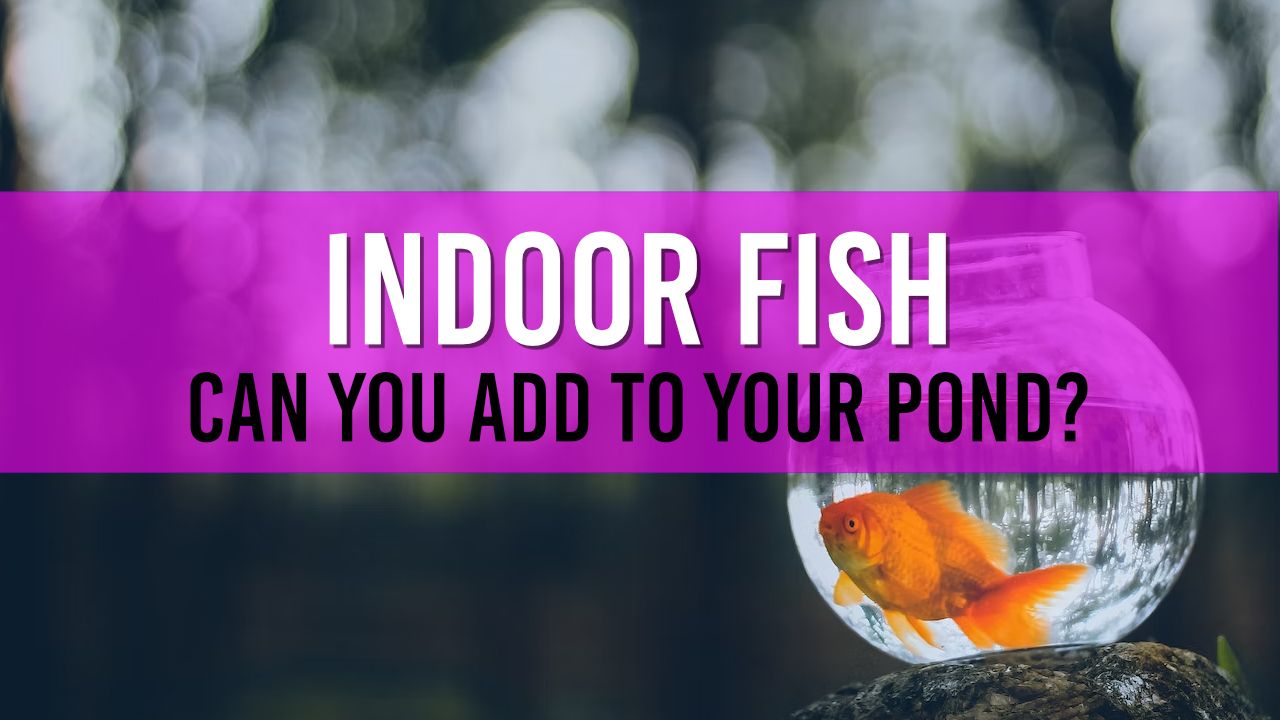Can I put my indoor cold water fish into my outside pond?
Yes! You can add move your indoor cold water fish to your outside pond. You must ensure you transfer them in warmer months and ensure they are introduced to your pond

Table of Contents
I often get asked if it's okay to transfer indoor cold water fish to an outside pond. The short answer is yes, but there are several factors to consider before making the move.
This article will cover essential information on how to successfully and safely introduce your indoor cold water fish to an outdoor pond.
Acclimatization Process
One of the crucial steps when moving your indoor fish to an outdoor pond is the acclimatization process. Gradually introducing your fish to their new environment is essential to avoid temperature shock, which can be harmful or even fatal.
To do this, place your fish in a container with their original water and slowly add pond water. This process should take at least 30 minutes to an hour to ensure a smooth transition.
Water Quality and Temperature
The quality and temperature of the pond water are critical factors when introducing indoor fish to an outdoor pond. Make sure to test the water parameters, such as pH, ammonia, nitrite, and nitrate levels, before moving your fish. If the water quality isn't ideal, take the necessary steps to improve it. Maintaining proper water quality helps to prevent various health issues in your fish, such as stress or diseases.
Learn more about pond water quality and how to maintain it here.
Pond Size and Depth
The size and depth of your pond play a significant role in the well-being of your fish. A larger and deeper pond helps to maintain stable water temperatures and provides ample space for your fish to swim and explore. Before transferring your indoor fish, ensure that your outdoor pond is spacious enough to accommodate their growth and movement. If you're unsure about the size and depth of your pond, this guide can help.
Predator Protection
Outdoor ponds may attract predators such as birds, raccoons, and cats. To safeguard your fish, consider installing netting or other protection measures. For more information on how to keep predators away from your pond, visit this link.
Pond Equipment
Having the right pond equipment, such as a pond pump and filtration system, is crucial for maintaining a healthy environment for your fish. If you're unsure about which pond pump to choose, this article can guide you through the process. Additionally, ensure that your pond has a working UV lamp to control algae growth and keep the water clear. Learn more about UV lamps for ponds here.
Seasonal Considerations
When transferring indoor fish to an outdoor pond, it's best to do it during spring or early summer when the water temperatures are warmer and more stable. Be sure to monitor the temperature and adjust your feeding schedule accordingly. For more information on when to feed your pond fish, check out this article.
Health of Your Fish
Finally, ensure that your indoor fish are healthy before introducing them to the outdoor pond. Sick fish may introduce diseases or parasites to the pond, which can affect other fish and the overall pond ecosystem. If you notice any signs of illness or abnormal behavior, consult this guide on treating swim bladder disease in pond fish, or seek advice from a professional.
Final Thoughts
In conclusion, it's possible to move your indoor cold water fish to an outside pond, but it requires careful planning and consideration. By following the steps mentioned above and regularly monitoring the pond's water quality, temperature, and overall conditions, you can ensure a successful transition for your fish.

